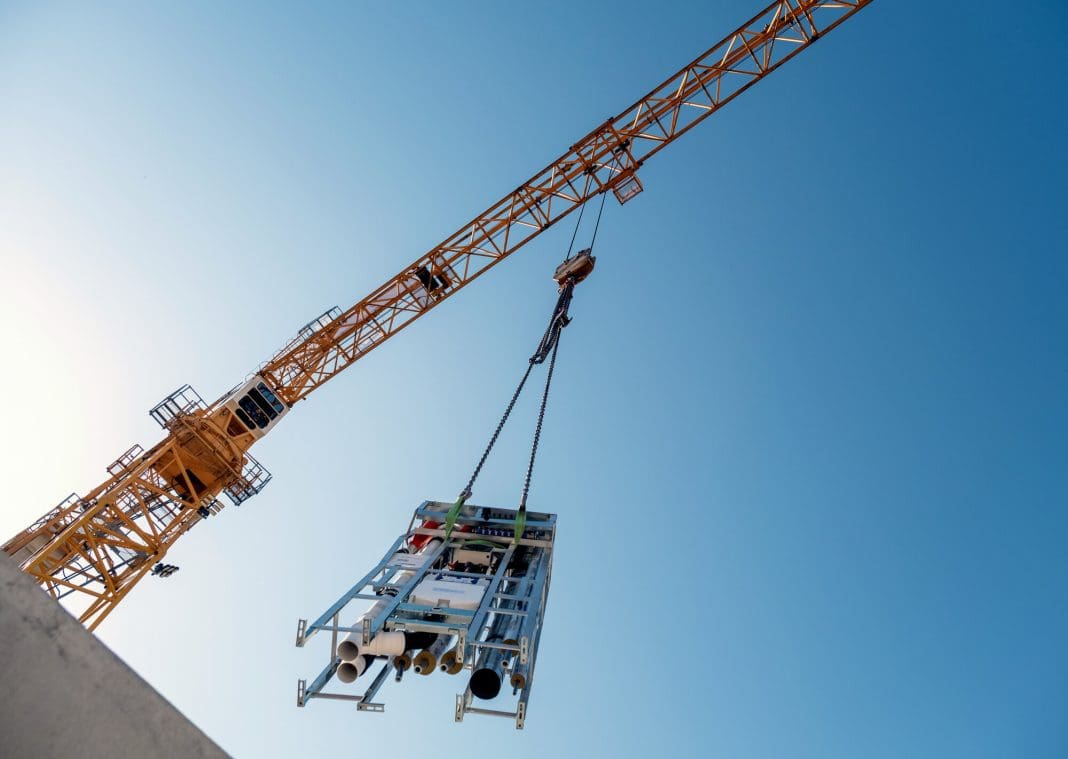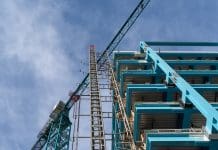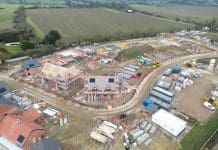Steve Richmond, head of marketing and technical – Building Solutions at REHAU UK, explores what building services professionals should consider when installing mechanical services on MMC projects and the role that offsite construction can play
Issues around high demand for buildings and low supply continue to affect the UK construction industry, and the need to seek out new solutions and approaches to challenges such as mechanical services installation is becoming more pressing.
Modern methods of construction (MMC) are already responsible for the annual construction of 200,000 homes. However, this needs to be scaled up to meet the Government’s own target of building 300,000 homes per year annually by 2025, and this doesn’t account for demand in other sectors such as student accommodation and hotel construction.
M&E services can benefit immensely with the right MMC application
Recognising this challenging figure, polymer solutions manufacturer REHAU has released its latest guide, Offsite Trends in Building Services, which explores MMC’s potential to address the pressures faced by the construction industry, using real-wrold examples from REHAU projects.
For example, one key benefit of offsite construction can be seen in the integration of building modelling data with bill of material documentation during the planning stage. This means that project stakeholders can enhance overall efficiency and quality control processes, reducing material waste by up to 90% while also minimising distracting on-site noise and tool loss. Furthermore, these benefits are not affected by the skills shortages in the sector, often known as the ‘missing million’ – the 937,000 new workers that the UK Trade Skills Index estimate will be needed by 2032 to meet building demand.
MMC is a rapidly evolving sector
Innovations from long-established European markets are broadening the horizons of what is possible in offsite construction, and best practices are already being implemented on high-profile projects in the UK.
For instance, an extension to the Tate Modern made use of REHAU’s Thermally Activated Building Structure (TABS) system for ecological cooling;providing an excellent example of offsite construction methods in action.
REHAU supplied 24,000m of its PE-Xa pipework and fittings to the contractor, which were embedded into a series pre-cast concrete slabs prior to being assembled onsite into each floor of the building’s 20 storeys.
Innovation is occurring on a smaller, component-by-component scale as well
For instance, risers have long provided a way to scale up high-quality work through facilitating ducts, pipes and conduits required for mechanical services.
Though these components have traditionally been made from copper or steel in MMC work, the introduction of polymer materials, including fiber-reinforced PP-R, has given M&E professionals more food for thought. As well as being easier to transport, polymer risers provide contractors with a broader choice over sizing and, as they can be welded and tested offsite, allow for greater peace-of-mind over performance.
The same applies to the growing popularity of modular shafts as a way to direct mechanical services through connecting pre-built, three-dimensional elements offsite. By integrating one shaft per floor that can be linked to other units on site, swifter and more standardised building work can occur.
Bathrooms and cupboards
Pre-wall constructions are another example of a replicable solution that can reduce build time if adopted at scale. Installed behind bathroom walls and customised to the sanitaryware, they allow multiple items to be connected to pipework within the same frame. This means that only a final covering wall panel has to be fitted over the pipes, saving valuable time on installation. REHAU recently acquired leading sanitaryware technology company MEPA in order to be able to provide pre-wall constructions alongside plumbing solutions.
By working with suppliers who can provide both elements, M&E professionals can ensure a complete, high-quality standardised solution when installing sanitaryware and bathrooms. Maintenance after the build is also made simpler – instead of dismantling the bathroom to access certain mechanical services, only one wall needs to be removed.
Volumetric construction can take this one step further with bathroom pods assembled at a factory and the modules simply craned into existing structures, with only pipework and electrical fitting required onsite for full functionality.
Utility cupboard construction offers contractors another route to streamline processes using MMC methods. This vital area of any residential or commercial space houses the building service isolation points so ensuring that these can be reproduced at scale within structure designs further reduces assembly time. Combined with modular plumbing components which connect other appliances and utilities, such as washing machines and air handlers within the utility cupboard, time can also be saved on maintenance and further installation work.
Third-party support will be needed to fully realise MMC’s potential
In conclusion, though the construction industry undoubtedly faces multiple challenges, the focus remains on delivering high-quality residential and commercial structures, quickly.
MMC’s role in achieving this objective is set to grow so collaboration with third-party experts and manufacturers will be crucial to developing effective building and installation practices.
Partnering with external companies such as REHAU can ensure building services professionals are making full use of the technology and the opportunities it represents, both now and into the future.














